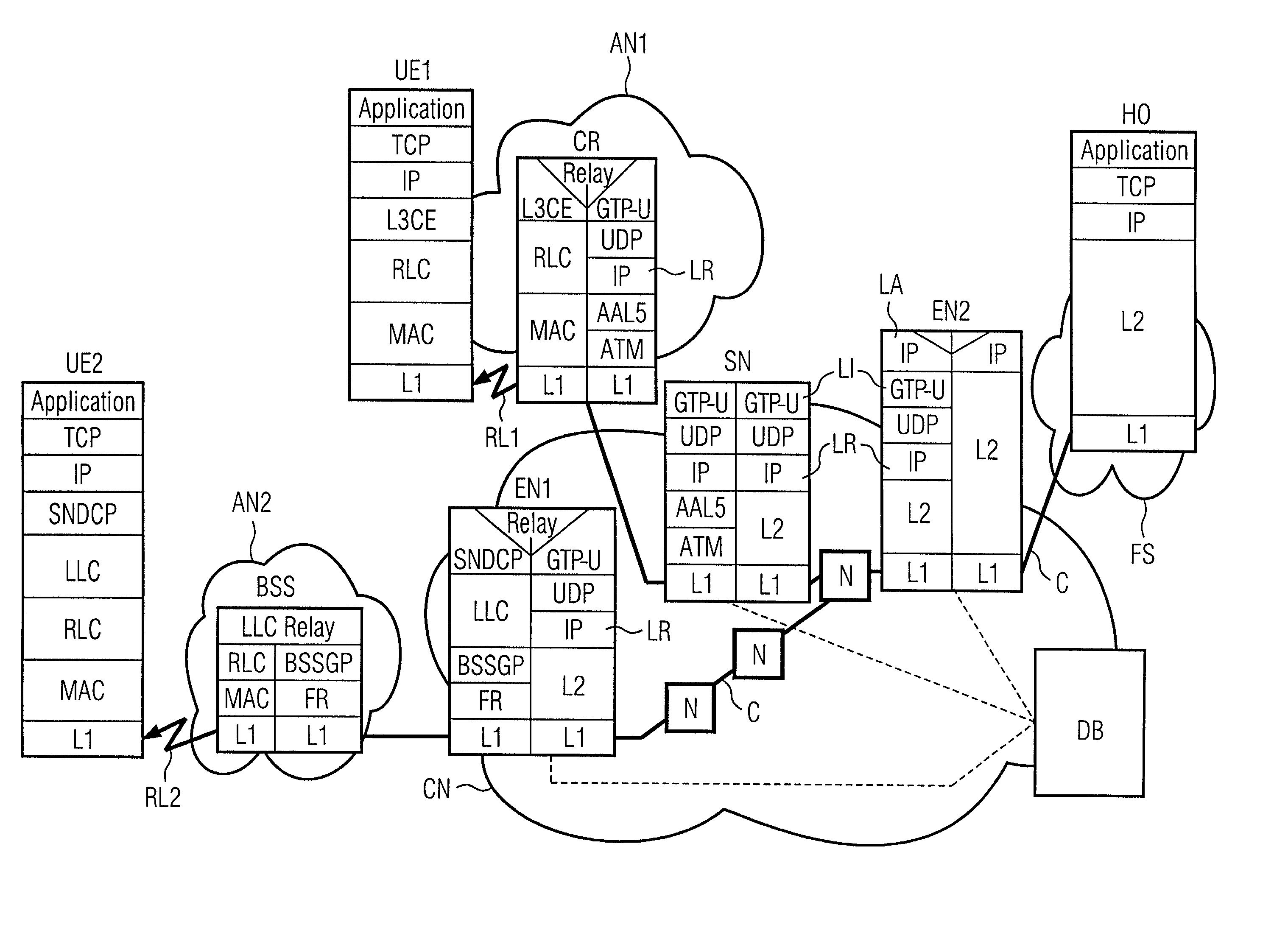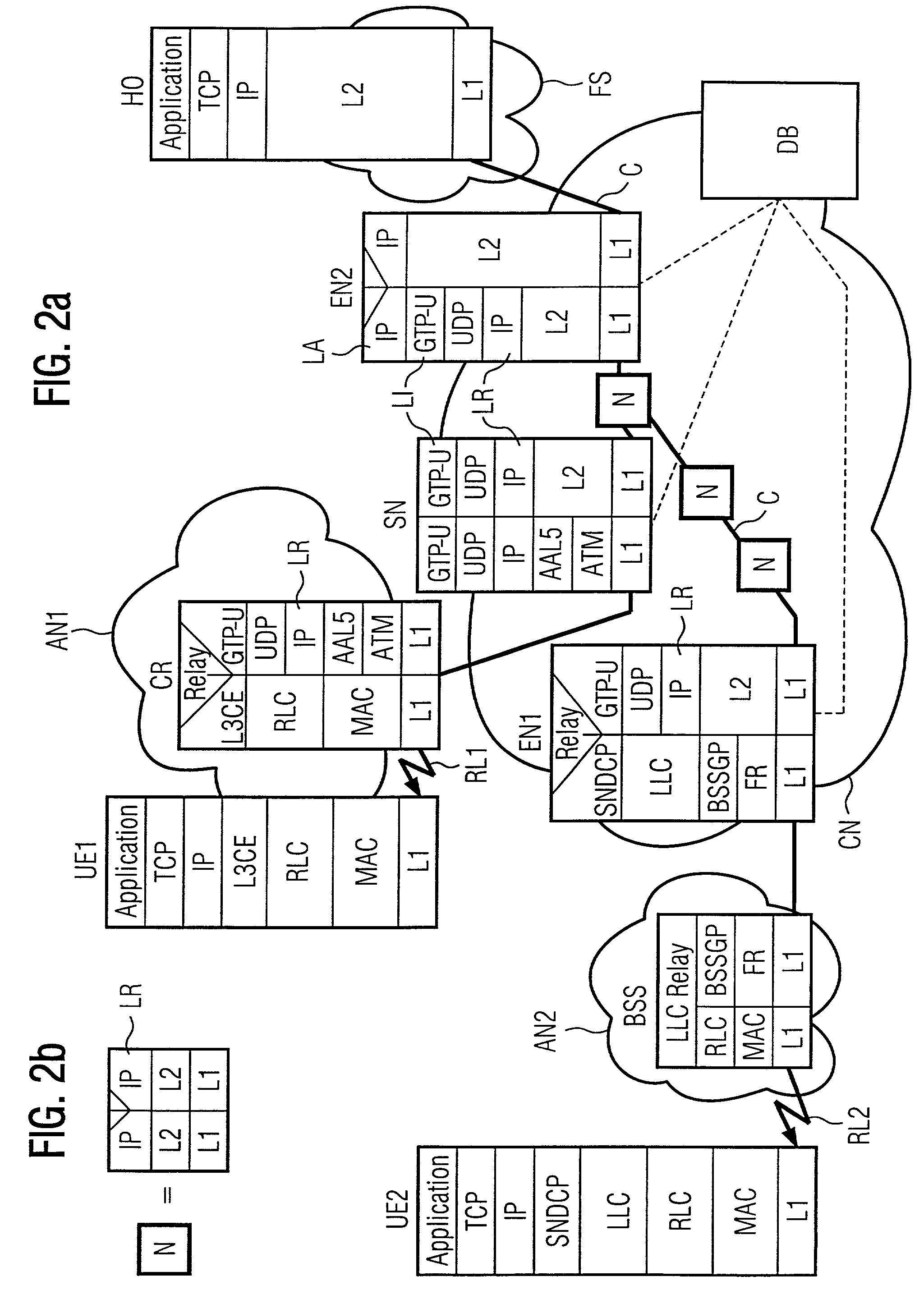[0013]The proposed method provides the opportunity to control the forwarding of data packets according to a user subscription in a
packet switched network. Therefore, the traffic can be forwarded according to the subscription throughout the entire communication system including the
core network. An operator can offer selected sets of traffic qualities to users with selected subscriptions. The method can also be used to control the access to specific nodes or services in the system. It is possible that one or several possible settings of the DS data field are not accessible for any user packets and are reserved for high priority traffic of the operator, especially
network control. The method can be used to differentiate between users from different access networks or between users located in their home area and
roaming users. For this purpose, a user
record can contain different entries for the same type of connection depending for example on the edge node or the type of edge node. It is also possible that the quality of service differs for different connections of a user or for the uplink and downlink packets of a connection. The method has the
advantage that it is easy to implement. It is especially suitable for the core networks of UMTS and GPRS communication systems.
[0016]If a negotiation process is performed with the
user equipment during the access of the communication system, the allocated resources for the connection to the communication system can differ from the user record by taking into account the available resources under the present
traffic conditions. In these cases, the DS data field is preferably also specified according to the
traffic load in the communication system which was used in the negotiation process or according to the result of the negotiation process, i.e. the parameters evaluated in the specification of the data field comprise the user record, the
traffic load and, optionally, a user request. This avoids differences in the traffic priority between different parts of the communication system.
[0017]Some edge nodes do not have the capability to access the data base containing the user record for a transfer of the data necessary for the setting of the DS data field. In these cases, it is preferable that a second node with this capability accesses the data base and forwards the information to the edge node which processes packets for said user. An example is a transfer of data from the user through the core network wherein the data packets are created in an RNC. The parameters for the setting of the DS data field are requested from the data base, e.g. an HILR, by the SGSN which serves the RNC. The parameters are then transferred from the SGSN to the RNC. Another example is a connection through two edge nodes of the network which both require the subscription information to set the DS data field for packets in uplink and downlink direction, respectively, although the setting can differ for both directions. When the connection is set up from the first edge node, e.g. the SGSN serving the user, it is provided with the information from the data base and can forward it to the other edge node, e.g. a GGSN connecting the user to a host in a further network. In this way, the other edge node obtains the subscription information without the necessity to contact the
database. A transfer of subscription information between nodes is also preferable if the communication system comprises different nodes for the forwarding and control of traffic. If the nodes
processing the traffic, e.g. media gateways, are controlled by one or several other nodes, e.g. MSCs, the information is preferably obtained from the data base by the controlling node and forwarded to one or several nodes
processing the traffic. A transfer of subscription information between nodes can reduce the processing load of a central base significantly.
[0019]The DS field according to the IP protocol comprises two bits which are presently unspecified and unused, i.e.
not evaluated by nodes supporting the IP
differentiated service. It is proposed that the unspecified bits are set according to the record and the packet handling is performed according to these bits. An
advantage of this embodiment is that the per hop behavior can be copied from IP packets on the
application layer. An enlarged number of handling categories is provided. In this way, it is possible to
handle the packets alternatively according to the user specification, the user subscription or a combination of both, for example depending on the load in a node or the communication network.
 Login to View More
Login to View More  Login to View More
Login to View More 


